Who’s Watching the Kids
Republicans are pushing a dangerous solution to the nation’s childcare crisis: deregulation.

Zachary David Typer was 6 months old when he suffocated after being put down for a nap by his childcare provider in Topeka, Kansas. Left on an adult bed, Zachary rolled over and became trapped between the mattress and the footboard. His provider, who had taken a muscle relaxer and was resting on a couch in another room, found him about an hour later.
Seven-month-old Aniyah Boone died of a brain injury and lacerated liver at her childcare program in eastern Kansas. Aniyah was left unattended by her caregiver, and when an 8-year-old who was also in care that day tried to take the crying infant out of her crib, the child tripped and dropped Aniyah. When the provider discovered the injuries from the fall, she never tried to perform CPR or call 911.
Eighteen-month-old Ava Patrick died within a few hours of being dropped off by her parents for her first day of childcare in a suburb of Kansas City. Trapped in a picket fence used to separate sections of the basement space, Ava strangled to death without anyone noticing. An investigation found the center’s owner had 14 children in her care that day—more than double the six she was licensed to supervise.
Nationwide, childcare deaths are rare, with most states reporting small numbers, if any, each year. But Ava, Aniyah, and Zachary were just three of the 30 children who died in childcare programs in Kansas between 2007 and 2009 in accidents that, for the most part, could have been avoided: the consequence of unsafe napping conditions, lack of supervision, or being left with a minor.
The tragedies spurred the passage of Lexie’s Law in 2010, a state law named for a 13-month-old who died while she was unsupervised on her third day at a home-based childcare program. The new, stricter requirements for licensing, inspections, and health and safety training catapulted Kansas to the top of the national childcare policy rankings. Caregivers there were now required to take more classes in safe-sleep practices, first aid, and child development, and to follow new rules about supervising and monitoring the children in their care.
“Providers have been deemed as a ‘babysitter’ for far too long,” Ava Patrick’s parents wrote in testimony in support of the bill. “We consider the daycare industry a professional industry and it is time that we treated it as such.”
Thirteen years later, in 2023, Kansas’s childcare system was once again in a state of crisis: The pandemic had decimated the industry. Enrollment numbers had plummeted as parents lost jobs or, fearing illness, pulled their children out of group care, and childcare staff had departed in droves, seeking safer, higher-paying jobs. Scores of providers were forced to close, leaving Kansas with scant supply as families gradually sought childcare again. In 2023, the state was short 84,000 slots; in 15 counties, there were no openings for infants or toddlers.
Faced with this reality, legislators once again proposed a fix—one, however, that was the precise inverse of the successful approach the state had taken a decade earlier. This time, they proposed deregulating the industry, effectively undoing several aspects of Lexie’s Law and reverting to the notion of childcare providers as babysitters. Among their favored solutions: teenagers.
Specifically, the Republican-dominated Legislature proposed allowing teens as young as 14—two years younger than had been allowed under earlier regulations—to help care for small children. Sixteen-year-olds, previously required to be supervised by an adult, would be able to work unsupervised. Legislators also sought to cut professional development requirements in half for childcare workers, from 16 hours a year to eight. And they wanted to give these potentially younger caregivers more children to care for on their own.
The proposal would “help address the shortage of childcare through smart removal of cost-increasing red tape,” testified Elizabeth Patton, state director of Americans for Prosperity Kansas, a conservative advocacy group.
Opponents saw it differently: “It’s terrifyingly dangerous,” said Emily Barnes, who at the time was a home-based childcare provider in Olathe, Kansas, with a decade of experience educating young children. “When you’re already working with a workforce that is overworked and underpaid, and the only answer you offer is to just put more work onto them, that’s not going to ensure that anybody is learning, and it will not lead to safe results. People will get hurt.”
The debate, largely along these lines, continued for eight weeks. Republicans almost universally supported the legislation, while Democrats opposed it. To many, the clear partisan split suggested that this dispute was merely another example of an ideological clash between a Republican-dominated Legislature and a small band of determined Democrats who also happened to be supported by the state’s Democratic leader, a not-unfamiliar scenario in the Midwest in recent years. But to childcare experts, it epitomized the nearly diametric views in America on how to repair a broken childcare system: one side focused on a quick increase in quantity; the other more concerned about resources and quality.
To these experts, it felt like the future of American childcare—and of American children—was at stake.
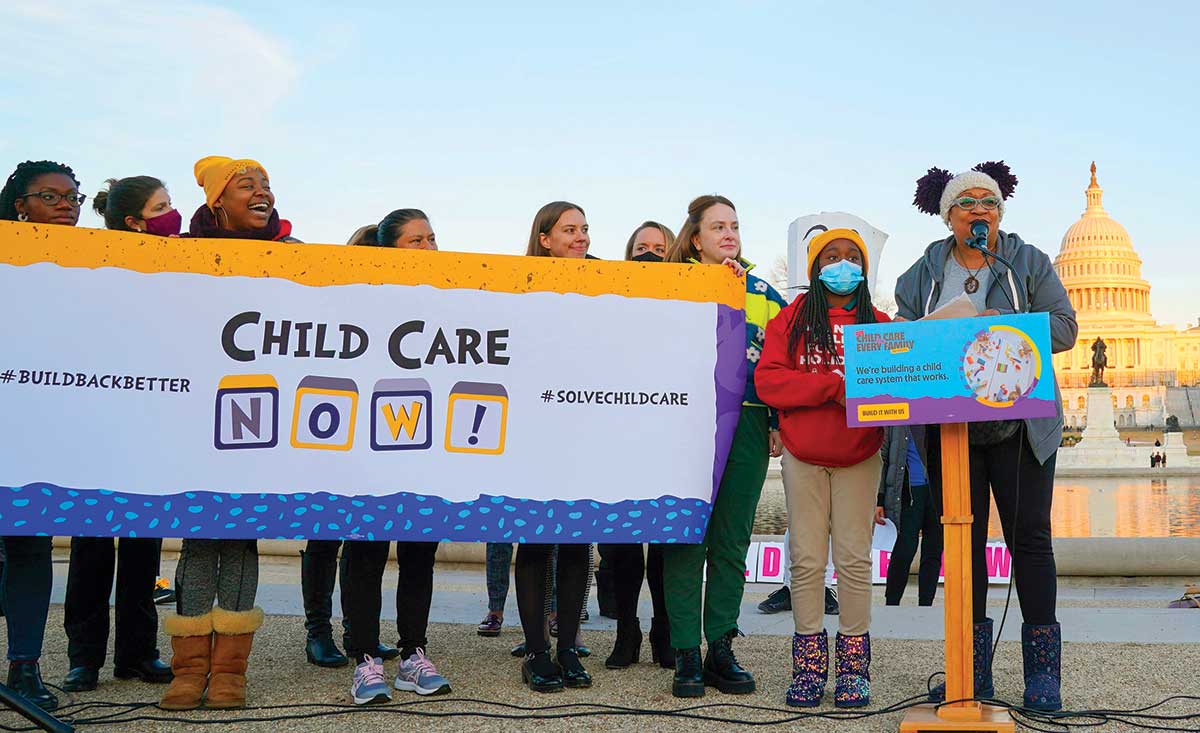
Kansas, it turns out, was not alone in its push to deregulate childcare. While the Sunflower State was busy debating whether to turn teenagers into childcare providers, other states were pushing ahead with their own plans to dramatically cut what they perceived as “red tape” in the childcare space.
Faced with the end of pandemic aid and more pressure on all fronts—some 16,000 childcare providers closed permanently between December 2019 and March 2021—states have been more assertive than ever before in developing their own childcare policies. Some states have made promising changes, such as raising wages and establishing benefits for childcare staff. But nearly a dozen others are trying to roll back some of the measures known to improve quality and keep children safe and thriving.
“States are looking for a way to avoid the true cost of care and education,” said Annie Dade, a policy analyst at the Center for the Study of Child Care Employment at the University of California, Berkeley. “Those that are proposing the solutions are really just insulting the work and value of early educators and looking for another group—in this case, younger workers—to exploit and do this work.”
Turning to teenagers is an increasingly popular solution. In 2022, Iowa passed a law that allowed 16- and 17-year-olds to work with older children in childcare centers and increased child-to-staff ratios, allowing one worker to care for seven 2-year-olds, up from six, or ten 3-year-olds, up from eight. This year, lawmakers took it further, proposing legislation that would allow those teenagers to care for infants and toddlers alone and unsupervised. In 2023, South Dakota lawmakers slashed training hours for educators, increased child-to-staff ratios, and expanded the role of teens as young as 14 working in both before- and after-school programs.
Other states have focused on deregulating childcare by loosening training and licensing requirements as well as oversight. In South Carolina, for instance, a new state law relaxes a requirement that employees of licensed childcare programs must have at least six months’ experience working in a licensed facility. And in Utah, unlicensed childcare providers can now care for eight children, up from six, without any training or oversight, save for a background check.
Even more states, including Connecticut, Wisconsin, Indiana, Oklahoma, and North Carolina, have slipped deregulation proposals into budgets and legislation, with varying success.
For a time, it looked like the country might be headed in a very different direction. As the pandemic ravaged already beleaguered centers across the country, the federal government stepped in with $24 billion in aid. It was a rare influx that offered programs some much-needed breathing room. For the first time, they had extra money to raise teacher salaries, provide bonus and retention pay, cover expenses, and stave off program closures. And once Joe Biden arrived in the White House, it seemed that the government might go even farther by making pandemic relief aid permanent. That is essentially what happened in Canada, where in 2021 leaders committed $30 billion over five years to the country’s first federally funded childcare system.
But in the United States, that wasn’t to be. Weeks after the House passed the Build Back Better Act—which had included $400 billion over 10 years for universal pre-K and affordable childcare—West Virginia Senator Joe Manchin withdrew his support, effectively killing the bill. Its successor, the Inflation Reduction Act, which came up for a vote nearly a year later, set aside no funds for childcare. The pandemic relief funds ran out in mid-2023.
A few states have tried to pick up the slack. In 2022, for example, New Mexico changed its Constitution to permanently funnel oil and gas money into early childhood programs. In 2023, Vermont established a new payroll tax to help fund childcare. But instead of investing more to support qualified workers and promote safe, high-quality care, many states have been going in the opposite direction: They’ve begun embracing laws that are dangerously detached from what’s needed and that fly in the face of decades of research showing what young children need to stay safe, to learn, and to thrive.
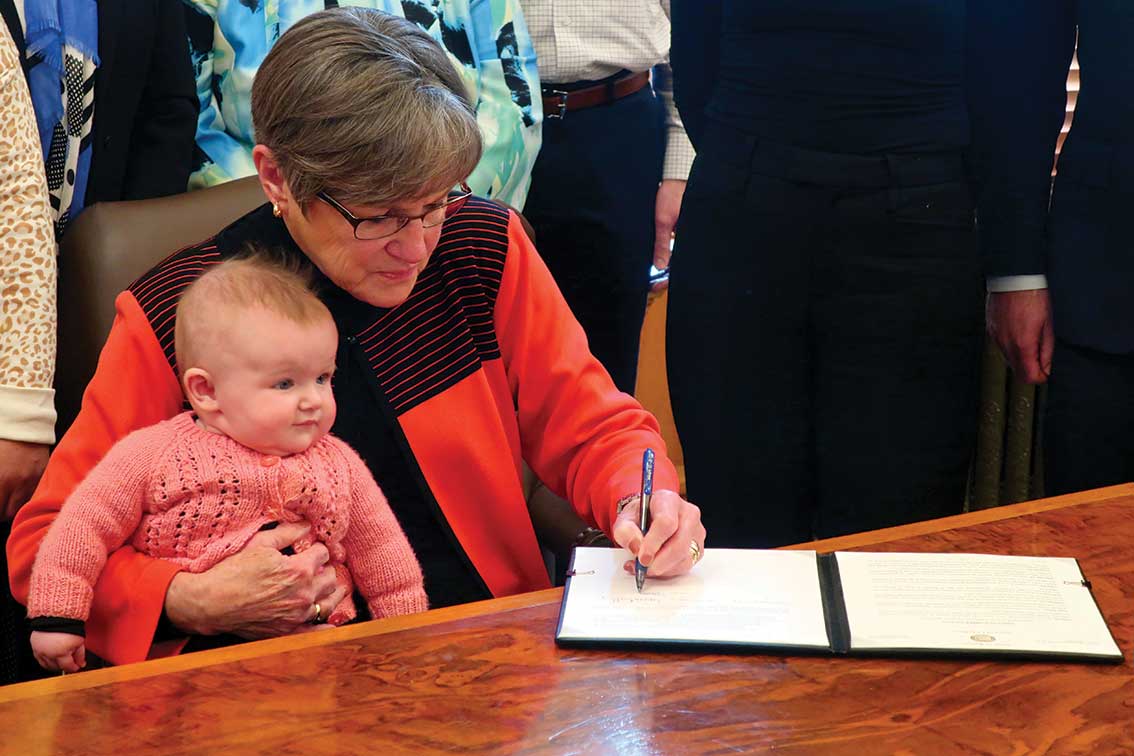
Kristen O’Shea, a Republican state senator in Kansas, learned about the childcare crisis the same way most parents do: She couldn’t find full-time care for her infant son. For six months in 2022, O’Shea cobbled together multiple arrangements, including using family and friends, members of her church, neighbors, and a nanny she found online.
In researching the issue, O’Shea told me, she discovered that Kansas’s childcare ratio for infants—three babies to one staff member—is one of the lowest in the nation, and she concluded that it’s unnecessarily strict. “Are there that many more infant deaths in other states?” she asked, before answering her own question: “I think you’d be hearing about that in the news, and you’re not.”
This research, combined with her personal frustration over the shortage, compelled O’Shea to cowrite a 2023 bill that proposed bringing teens into care facilities and classrooms, among other changes. Childcare operators will more easily grow and flourish, O’Shea argued, when the government steps aside and programs are no longer hampered by “crazy regulations.”
The belief that teenagers can’t play a role in caring for infants and toddlers is rooted in “ageism,” she added. “You can’t say a 14-year-old is not going to be as good as a 65-year-old.”
Other proponents of deregulation largely echoed O’Shea, arguing that the looser requirements could get more children into licensed programs and keep them out of potentially more dangerous, unlicensed settings. Meanwhile, most Democrats and experts on early childhood argued that deregulation would lower the quality of care and endanger young children. They warned that the law would walk Kansas back in time.
Ashley Goss, Kansas’s deputy secretary for public health, testified that it would reverse vital aspects of Lexie’s Law. “As written, this bill fails to consider national health and safety standards which are critical to children’s health,” Goss wrote.
“It’s really about cramming more children in a smaller space and having them supervised by less well-trained staff,” argued Democratic state Senator Ethan Corson during the debate. The proposal would pack kids “in there like sardines, as many as we can, with less qualified staff.”
Several providers who spoke said they wouldn’t even consider taking advantage of the looser regulations. “I would never accept four infants in care by myself,” wrote Tiffany Mannes, a family childcare provider in Overland Park, outside Kansas City, who has worked in the field for more than two decades. “To be frank, there are children’s lives on the line…. These changes would cause lower-quality care in a best case scenario and possibly injury or even death in a worst case scenario.”
Despite such impassioned testimony, in April 2023, 14 years after Ava Patrick died at her childcare program, the Kansas Legislature passed the deregulation bill overwhelmingly. The tally—77 in favor, 46 opposed—fell almost completely along party lines. The bill was on its way to becoming law. But when it was sent eight days later to Governor Laura Kelly, a Democrat, she promptly vetoed it.
Parents need access “to safe, affordable, quality childcare,” Kelly said in a statement announcing her decision. “This bill would reverse the progress we’ve made toward that goal…. While I agree it’s time to review our childcare policies, we must do it together—and in a way that improves, not harms, our state’s ability to help families and keep kids safe.”
The governor’s veto might have ended, or at least paused, the battle over childcare in Kansas, shutting it down indefinitely. But the bill’s backers were not ready to give up. So, instead, the veto set up the state for an ongoing tug-of-war.
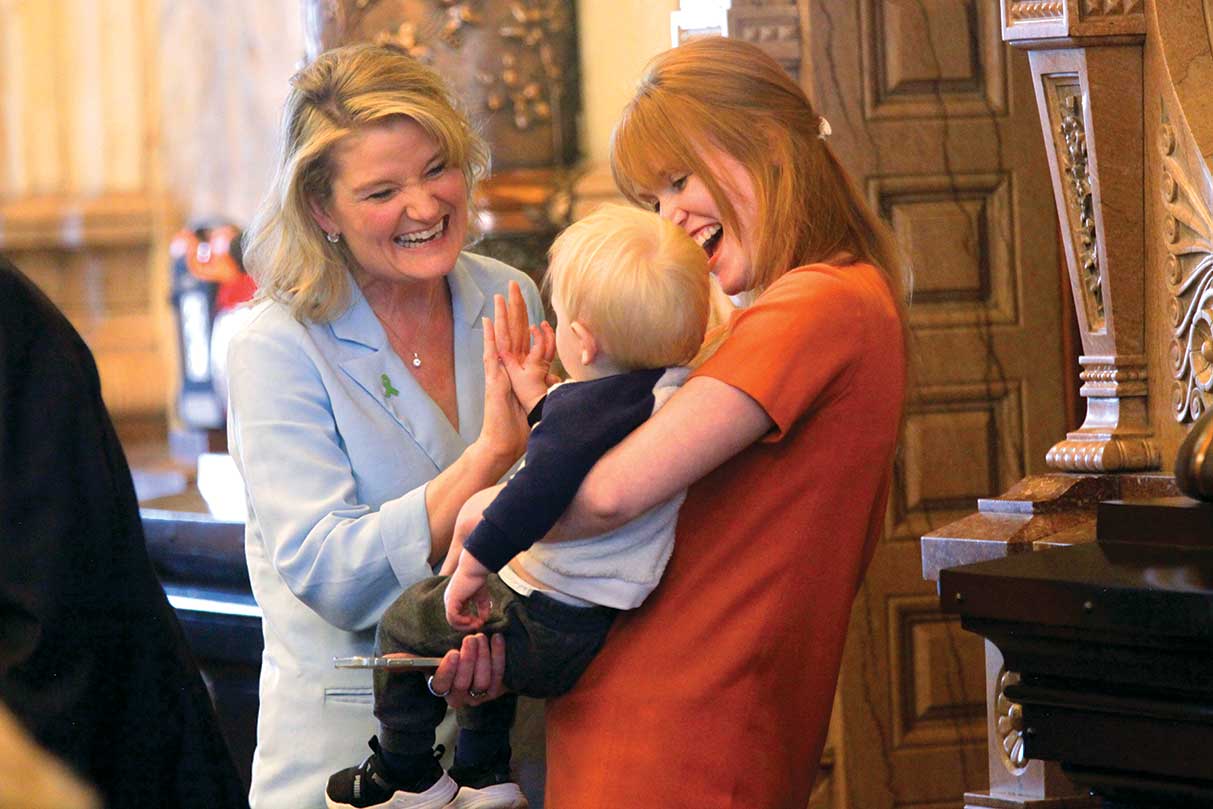
During the legislative debate in Kansas, the opponents of deregulation focused, for the most part, on safety. Providers like Tiffany Mannes testified eloquently about the dangers they foresaw if child-to-staff ratios were increased. But among national experts who have been watching the push for deregulation that is taking place across the country, there is an additional concern—one that goes beyond safety to the broader question of quality.
Decades of research, experts explained in more than 20 interviews, show why quality childcare—care that prioritizes low child-to-staff ratios, caregiver experience, and a stimulating environment—matters. Inside a child’s brain are billions of neurons, which form connections with other neurons and ultimately create pathways for various brain functions. In the time it takes to read this sentence, a baby’s brain will create around 9 million new neural connections, including sensory pathways that help with vision and hearing, as well as language skills and other complex cognitive functions.
The experiences and environments of young children determine which neural pathways become stronger and which become weaker.
“This is a really sensitive time to get it right for kids. They need safe, stable, nurturing environments and responsive caregiving,” said Rahil Briggs, a clinical professor of pediatrics and psychiatry at Albert Einstein College of Medicine and the national director of HealthySteps, a pediatric healthcare program.
Right now, childcare providers in the United States are struggling to meet these needs. While there are plenty of loving caregivers who engage children in thoughtful interactions in safe settings, studies show that, overall, childcare quality is low in the United States. A seminal 2006 study funded by the federal government estimated that only 10 percent of childcare programs provide kids with “very high quality” care. More recent research suggests that quality not only remains a problem but is also wildly uneven, especially when it comes to children from low-income families.
Many children spend their days in “language isolation,” experts report, deprived of adequate interactions with caregivers. For decades, children have simply been surviving their care, not thriving in it. And, once again, Covid only exacerbated the problem: Nearly 45 percent of childcare providers said the quality of the care they offer has been affected by pandemic-related stressors, according to a survey earlier this year for The Hechinger Report by RAPID, a project of the Stanford Center on Early Childhood.
“We have many children in settings which may look fine, but where they are just completely ignored,” said Bridget Hamre, the CEO of Teachstone, an organization that developed an early-childhood classroom scoring system, which she helped create.
In sounding these alarms, experts were careful not to fault providers, many of whom work long hours in a physically and emotionally demanding job despite making poverty wages. In the majority of states, more than 15 percent of childcare workers live in poverty, and many have trouble paying for basic needs like food and housing. Nearly half use public assistance.
Popular
“swipe left below to view more authors”Swipe →These conditions have led to a revolving door for caregivers. More than half of the directors of childcare centers and owners of family childcare services report staffing shortages. Thus far, however, the trend in many state legislatures has not been to push for more funding to boost wages or bolster training, but to strip the sector of some of its most effective guardrails.
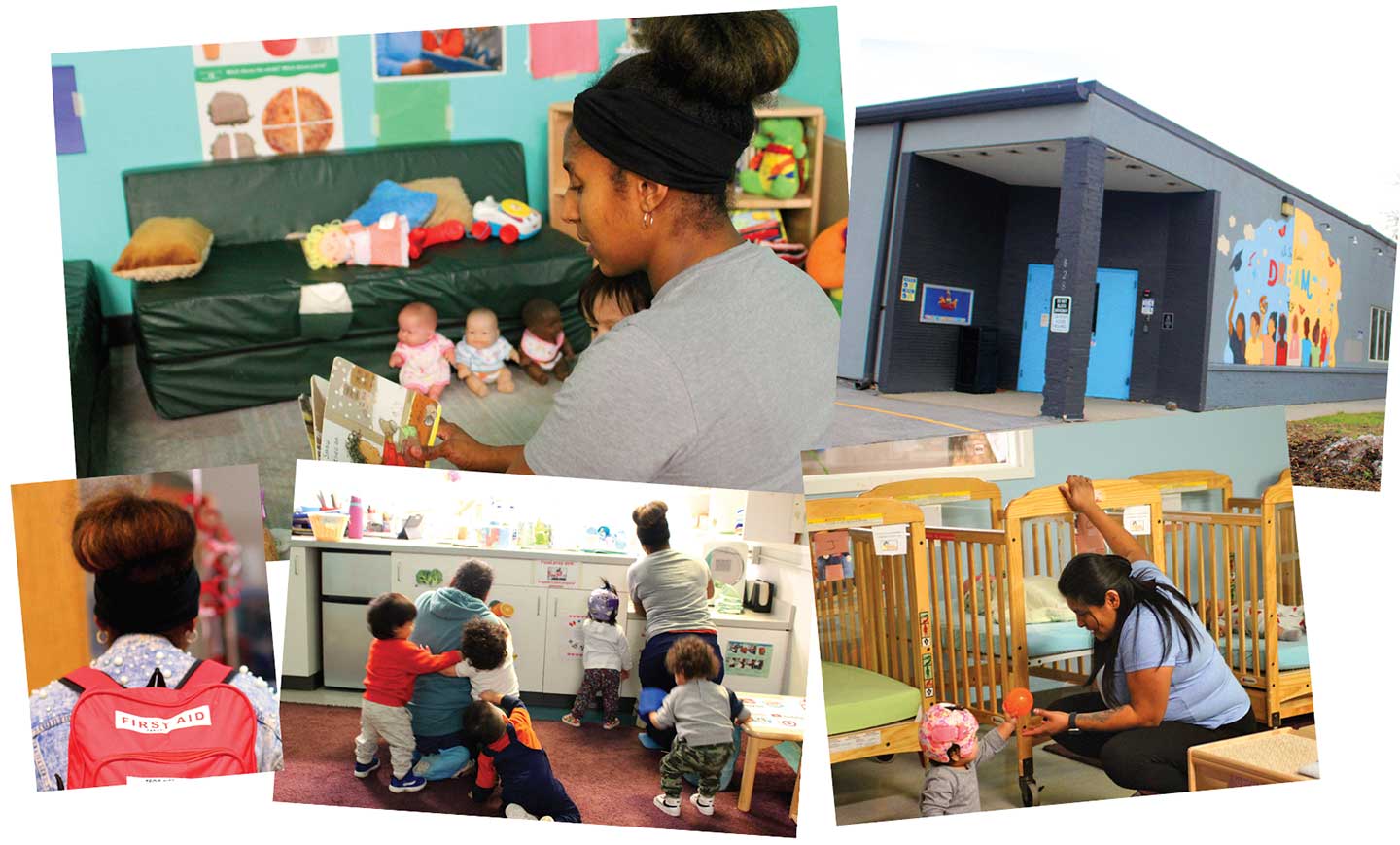
At 9:30 am on a Wednesday morning earlier this year, Kay Strahorn’s alarm went off on her phone, alerting her that it was time to give asthma medicine to one of the toddlers at the childcare program she directs in Iowa. Strahorn quickly weaved her way through the building to the Panda classroom, where she carefully pushed open the door and greeted the two teachers inside. “The dream team,” she whispered as she slipped her shoes off and stepped inside the room.
In Iowa, weakened regulations, including looser child-to-staff ratios and allowing teenagers in classrooms, have been in place for two years. For Strahorn, who runs Conmigo Early Education Center in Des Moines, where the top of the state capitol building’s gold dome is visible from the playground, the new regulations have done nothing to help expand capacity or ease the staffing crunch. Strahorn refuses to raise ratios. Not only would quality take a hit, she said, but “it’s not safe for the kids” and “it’s more work for the teachers.”
“These teachers are already doing so much work,” she added.
Strahorn has employed 17-year-olds, but in a limited capacity as teacher aides. The teenagers are never alone with the children and don’t change diapers. Even though it is allowed by the state, Strahorn would never hire teens as sole caregivers, she told me. What Conmigo really needs, she said, is money to raise wages so that she can retain her best teachers—people like Andrea Nieto and Brittany Brown, the dream team.
Strahorn knew within moments of starting Brown’s interview that she had the right temperament to care for and educate children. Brown showed up at the childcare center with her infant daughter, and when her daughter became fussy during the interview, Brown was unshaken. She stood up and gently started to bounce the infant while answering interview questions, without missing a beat.
Iowans have made it clear that the direction that the Legislature took doesn’t reflect their wishes: 65 percent of those surveyed in 2022 said they don’t want teens working unsupervised in childcare programs. But a not-insignificant number of providers are taking advantage of the new rules. In the wake of the 2022 legislation, 42 percent of providers surveyed in Iowa said they had increased child-to-staff ratios in their 2- and 3-year-old classrooms; a majority of those providers said the increased flexibility helped relieve staffing burdens. The law also allows 16- and 17-year-olds to care for school-age children unsupervised in childcare settings; about half of childcare programs report having done so.
Still, Iowa’s childcare providers continue to close their doors, suggesting that the measures aren’t leading to the revival lawmakers had hoped for. The decline has been significant enough that even some state officials have noted that the new legislation does little to address the desperate need for experienced caregivers, especially in the wake of the social disruption caused by the pandemic.
In recent years, childcare programs have seen an increase in disruptive behavior among children, as well as in undesirable behavior from staff, such as yelling or roughly pulling youngsters’ arms, said Ryan Page, the director of childcare for the Iowa Department of Health and Human Services. “When you’ve got high turnover and under-trained staff, they’re not knowing how to manage some of the behaviors,” she added.
In at least one documented case, the caregiver’s age was noted as a factor in an abuse complaint. In 2023, the year after the Iowa legislation passed, a teenager working in a childcare program was accused of hitting a child in her care, pulling a child’s arm, and swearing. An investigation found that the teen told the child’s mother, another teacher at the childcare program, that she was “a crackhead” and had no control over her own children. In a report on the investigation, an Iowa official wrote, “It is in the best interest of the center for [the teen] to take [a] break until she is mature enough to work here.”
Strahorn told me that the legislation hasn’t made it easier to find qualified, experienced teachers in Iowa. “There was no more money attached to it,” she said of the new law. “We can’t pay our teachers any more money,” and it’s not fair to simply make their job harder, she added.
Rather than add to teachers’ workload or hire someone younger or unqualified, Strahorn stepped in as a lead pre-K teacher, in addition to her director role, for the entirety of the last school year while waiting for someone qualified to apply. Part of the problem is the pay Conmigo can offer: Wages at the center start at $12 an hour for teacher aides and $14 an hour for lead teachers—about the same as the state’s median hourly wage for childcare workers, but still not enough to attract enough highly qualified staff.
Some early-learning experts in Iowa are optimistic about small efforts in the state that directly target issues like low pay and retention. A state program that financially rewards early-childhood educators who increase their education level has had impressive results: 85 percent of participants have stayed in the field, and nearly all said it has eased financial stress. And under a 2023 pilot program, childcare workers are now eligible for financial assistance to help pay for their own childcare costs. Iowa has also invested in programs that ease the burdens of running a business, Page told me, including providing financial consulting and paying for childcare management software.
But despite the promise of these initiatives, the Republican majority in the Legislature remains focused on deregulation. During this year’s session, they proposed allowing teenagers to care for infants and toddlers unsupervised. While a modestly amended version (tailored to address fierce resistance from childcare advocates and experts) ultimately failed to progress beyond the House, Iowa childcare experts have no illusions that the fight is over. They expect more deregulation efforts in the future.

During the brief but frenzied final stretch of the presidential campaign, many childcare advocates saw Vice President Kamala Harris as the best chance for more federal investment in childcare—and with it, a meaningful counterweight to the deregulation movement. Harris spoke frequently of her plans for a “care economy,” which included a proposal to cap childcare costs at 7 percent of a working family’s income, and called for childcare providers to “receive the wages that they deserve based on the dignity of their work.” These plans followed some imperfect yet notable childcare policy strides made during the Biden administration, including new federal rules that lowered the cost of care for military families and low-income families.
With the election of Donald Trump and JD Vance, the prospects for a renewed national commitment to quality, affordable childcare have dimmed considerably. Now, childcare advocates are gearing up to fight for federal resources from a deeply conservative administration that has not only signaled hostility toward federally funded programs but also made deregulation a cornerstone of its agenda. Project 2025, a blueprint for a second Trump administration organized by the Heritage Foundation, calls for the elimination of the Office of Head Start, which oversees federally funded early-learning programs that serve more than 800,000 low-income children. It also directs the administration to prioritize funding for military families and “familial, in-home” care, including money for stay-at-home parents.
Trump’s first term in office offers some additional insights into what we might expect. During his first go-round, Trump proposed cuts to the Child Care and Development Block Grant, a federal program that helps low-income families afford care. (Congress ultimately passed increases to the program, which Trump signed off on.) Although Trump then provided $3.5 billion in relief to the program during the pandemic, his childcare policy approach has since focused largely on reducing costs for families through tax credits, without addressing the operating and staffing costs that are major barriers for programs.
For his part, Vance has devoted considerably more time to the topic of childcare, but largely along lines that are hostile to robust government support. Vance is a vocal opponent of formal, publicly funded childcare. In 2021, he wrote on X that “‘Universal day care’ is a class war against normal people.” During this year’s vice presidential debate, he acknowledged that the government may need to spend more money on childcare but said that money should go toward informal care arrangements.
Vance has also suggested that regulations are to blame for childcare staffing shortages, claiming in a September interview with far-right Turning Points USA founder Charlie Kirk that there are plenty of people who want to work in childcare, but that “the state government says you’re not allowed to take care of children unless you have some ridiculous certification that has nothing to do…with taking care of kids.” (It was unclear what Vance was referring to, as the only formal certification required of childcare staff in licensed settings is typically in first aid and CPR.)
Vance also appeared to blame the staffing challenges that providers are facing on education requirements for childcare teachers. “Don’t force every early childcare specialist to go and get a six-year college degree,” Vance told Kirk. (Currently, no state requires anything close to that level of education to work in childcare.)
The similarity of such arguments to those advanced by pro-deregulation politicians suggests just how strongly their goals will be aligned over these next four years. The Trump-Vance administration will almost certainly fan the flames of the childcare deregulation movement at both the state and national levels. And while there is little evidence that the states that have moved toward deregulation have seen positive changes on the ground—many parents are still unable to find care, and providers are still shutting down—that hasn’t curbed the deregulatory zeal of many politicians. In Kansas, as elsewhere, the push continues.
This spring, in Kansas, Republican lawmakers once again brought forward a series of deregulation measures. Although they made no mention of 14-year-olds this time, they did propose increasing child-to-staff ratios as well as the maximum number of children who can be cared for by one provider in home-based settings—those settings where the majority of child deaths have occurred.
After several revisions, the proposed legislation died, but that didn’t stop the Republican majority in the Legislature from asserting its will: In April, lawmakers passed the final state budget, which was stripped of most of the $56 million in funding that Governor Kelly was seeking for childcare.
Also this spring, the Kansas Department of Health and Environment completed a lengthy process of changing regulations on its own, including some easing of childcare ratios. The new regulations were approved by the state attorney general and took effect in early August.
“Do I think they went far enough? No, and they know that,” said Senator O’Shea, referring to the state’s efforts. “But it’s a step in the right direction.” It remains unclear whether Republican legislators will try to push for more deregulation in the upcoming term. In late April, O’Shea announced that she would not run for reelection.
On the federal level, experts question whether lawmakers will ever give the childcare industry the funding it needs to solve the problems that states are trying to solve on their own. Sonya Michel, a childcare historian, told me she’s pessimistic that America will ever adequately fund childcare. “Given the political polarization and our lack of a history or tradition of social democratic support for public social service…I don’t see that happening,” she said. “It’s hard to see where the impetus would come from at this point.”
Meanwhile, in childcare programs around the country, America’s children are already in the midst of their most critical days of brain development, their brains rapidly producing new neurons. Regardless of which circuits of the brain are strengthened and which are not, lawmakers will continue to debate how much of our money and attention the early years are deserving of, and then pass children along to schools where many teachers will attempt to solve the very problems that didn’t need to be created in the first place.
We cannot back down
We now confront a second Trump presidency.
There’s not a moment to lose. We must harness our fears, our grief, and yes, our anger, to resist the dangerous policies Donald Trump will unleash on our country. We rededicate ourselves to our role as journalists and writers of principle and conscience.
Today, we also steel ourselves for the fight ahead. It will demand a fearless spirit, an informed mind, wise analysis, and humane resistance. We face the enactment of Project 2025, a far-right supreme court, political authoritarianism, increasing inequality and record homelessness, a looming climate crisis, and conflicts abroad. The Nation will expose and propose, nurture investigative reporting, and stand together as a community to keep hope and possibility alive. The Nation’s work will continue—as it has in good and not-so-good times—to develop alternative ideas and visions, to deepen our mission of truth-telling and deep reporting, and to further solidarity in a nation divided.
Armed with a remarkable 160 years of bold, independent journalism, our mandate today remains the same as when abolitionists first founded The Nation—to uphold the principles of democracy and freedom, serve as a beacon through the darkest days of resistance, and to envision and struggle for a brighter future.
The day is dark, the forces arrayed are tenacious, but as the late Nation editorial board member Toni Morrison wrote “No! This is precisely the time when artists go to work. There is no time for despair, no place for self-pity, no need for silence, no room for fear. We speak, we write, we do language. That is how civilizations heal.”
I urge you to stand with The Nation and donate today.
Onwards,
Katrina vanden Heuvel
Editorial Director and Publisher, The Nation
More from The Nation

Journalism’s Next Wave Journalism’s Next Wave
In 2024, writers with StudentNation captured the stories of an emerging generation—and revealed the future of journalism.
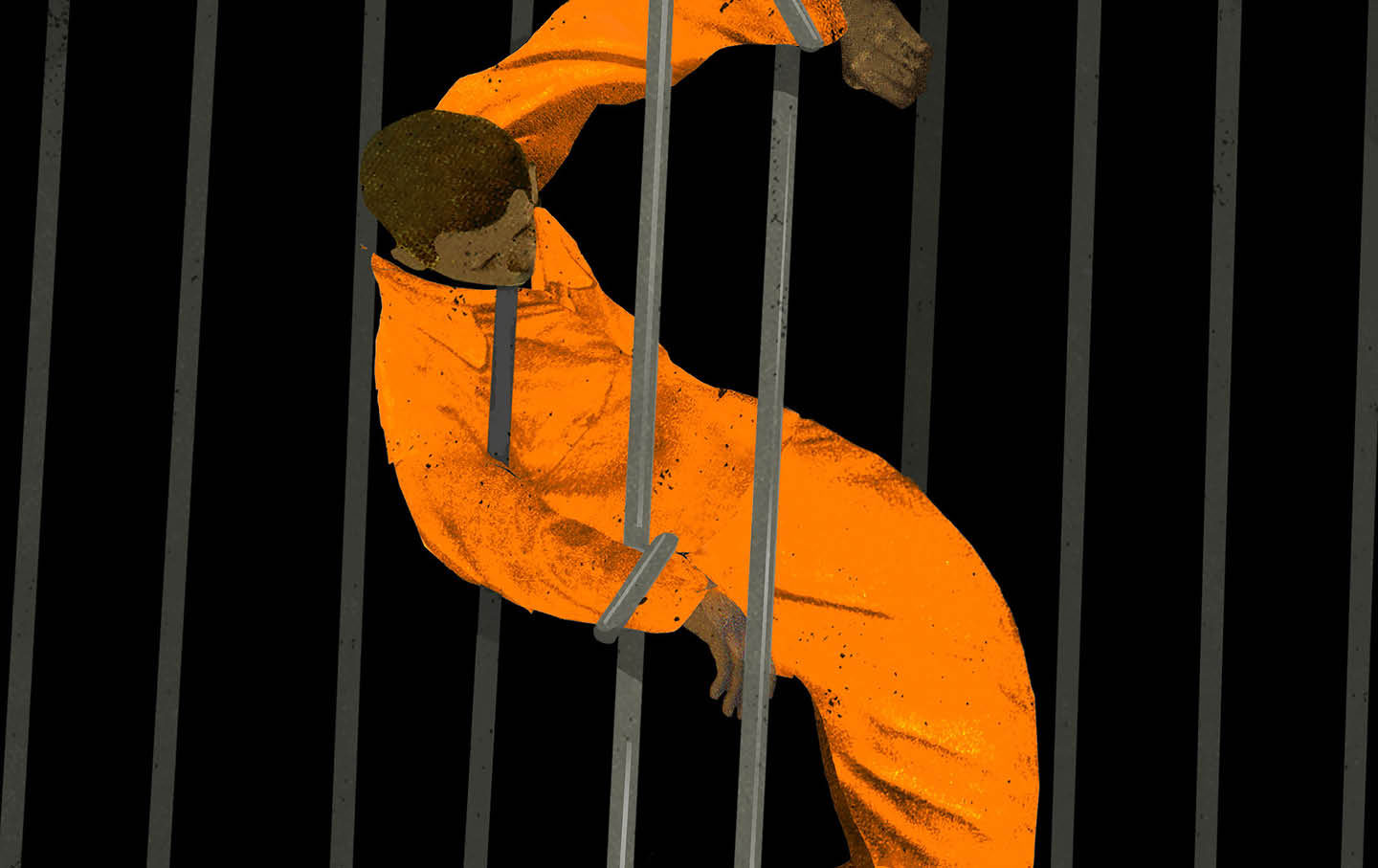
Illinois Has Put an End to the Injustice of Cash Bail Illinois Has Put an End to the Injustice of Cash Bail
Amid a national backlash against criminal justice reform, Illinois has achieved something extraordinary. It’s working better than anyone expected.
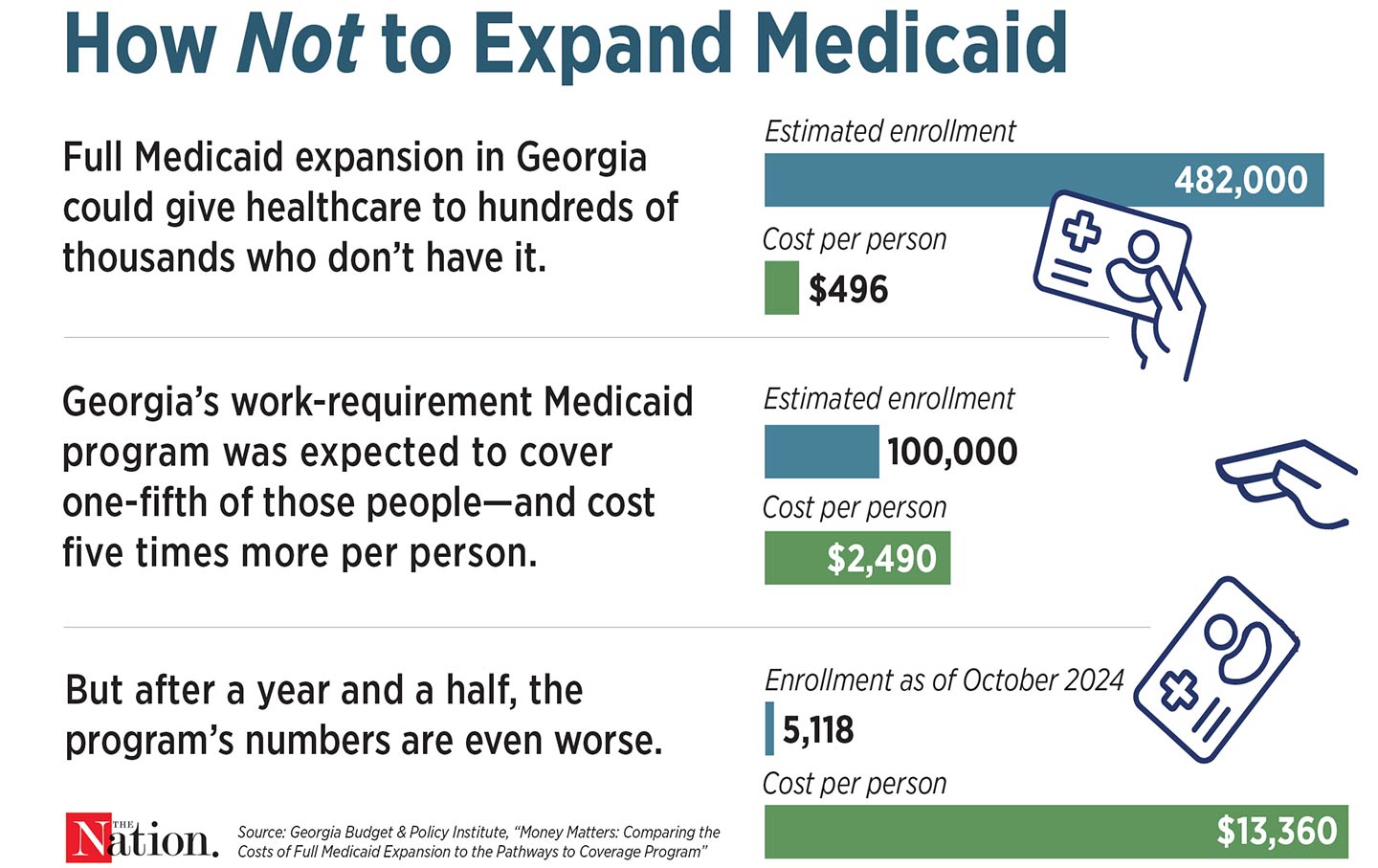
Georgia’s Disastrous Medicaid Work Requirements Georgia’s Disastrous Medicaid Work Requirements
Georgia’s Republican governor, Brian Kemp, said that 345,000 would enroll in the state’s Medicaid program, which has strict work requirements—so far just 5,118 people have.
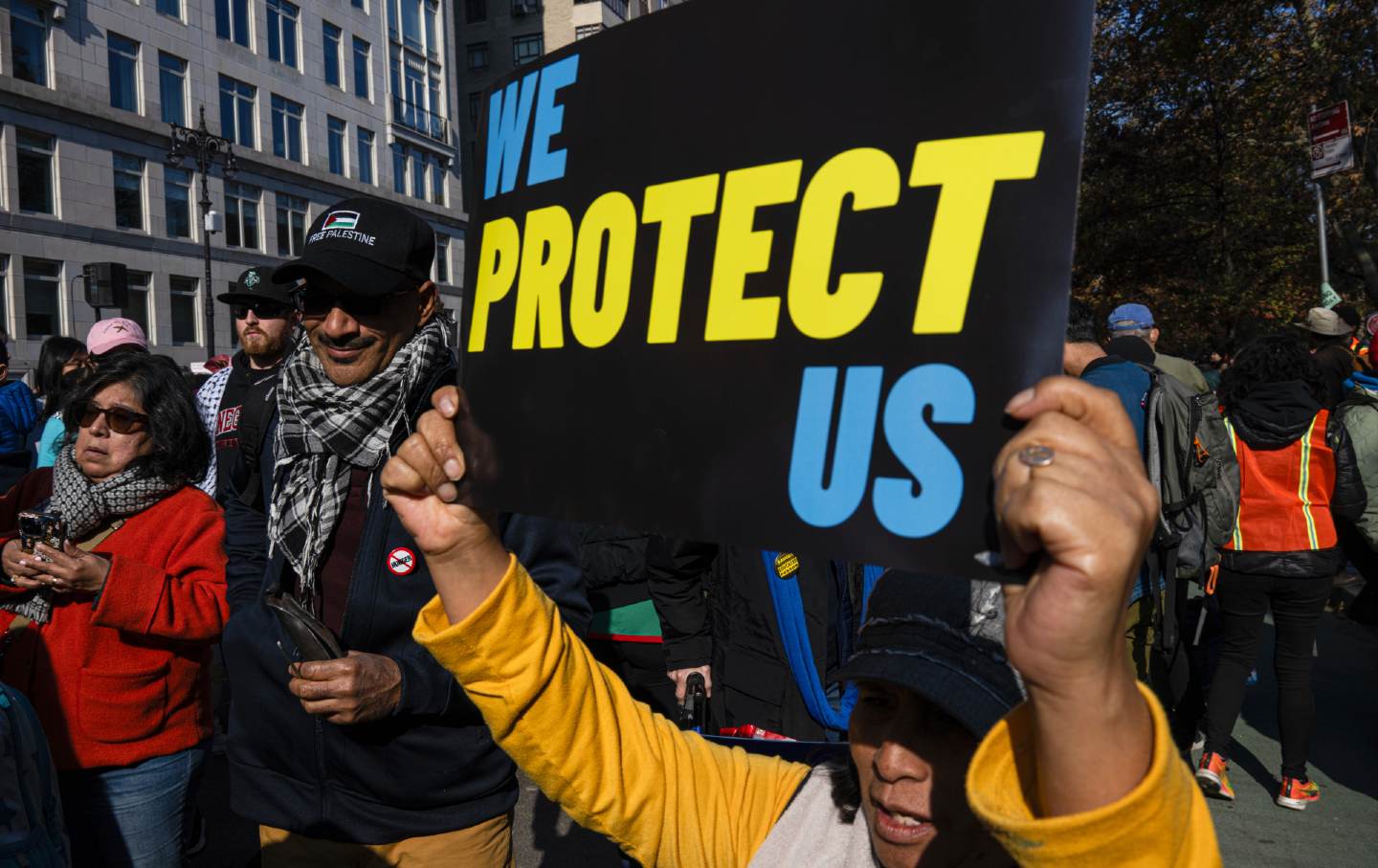
Where Do We Go From Here? Where Do We Go From Here?
Thinkers, activists, and writers share their ideas on how to respond to the coming Trump era.

The Nonstop Gay Sex Party on the Mexico City Subway The Nonstop Gay Sex Party on the Mexico City Subway
The city’s metro hosts—and authorities unofficially sanction—a queer institution unlike any other.

Wall Street Embraces MBS’s Money Man Wall Street Embraces MBS’s Money Man
After the assassination of journalist Jamal Khashoggi, business leaders made a show of shunning Saudi Arabia, doing deals only behind closed doors. Now it’s all out in the open.


